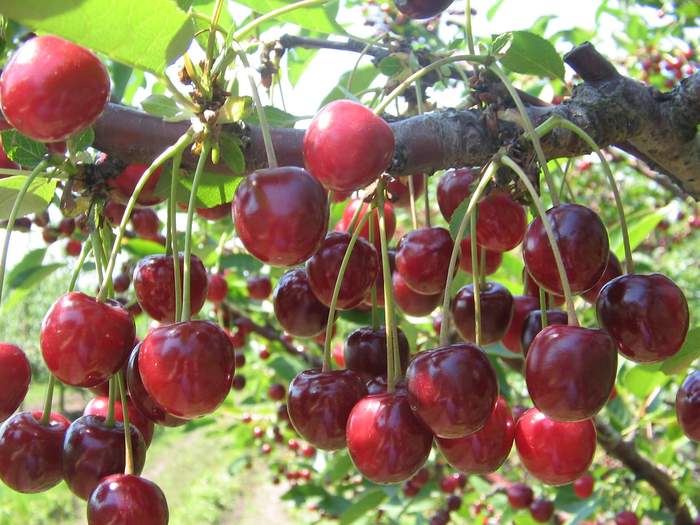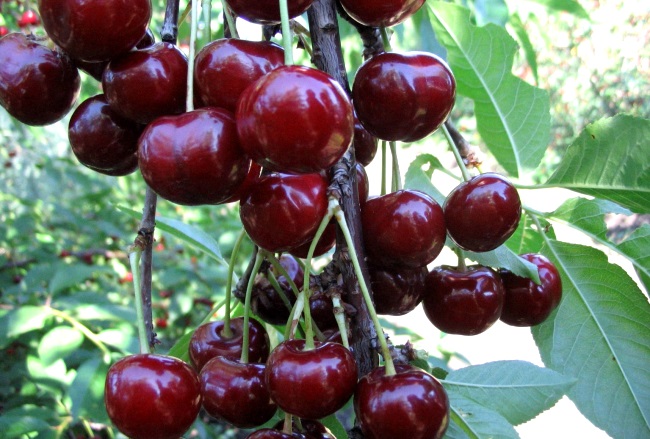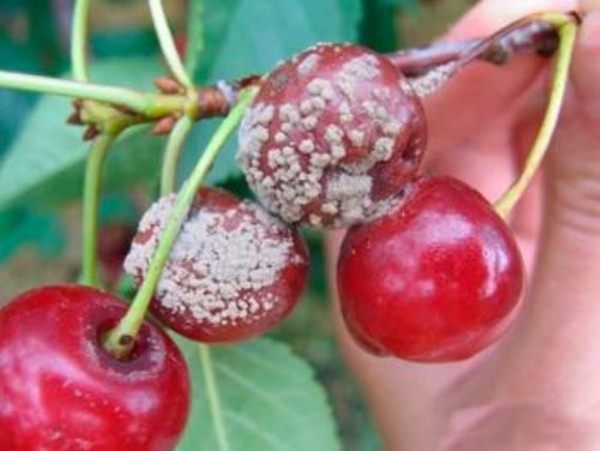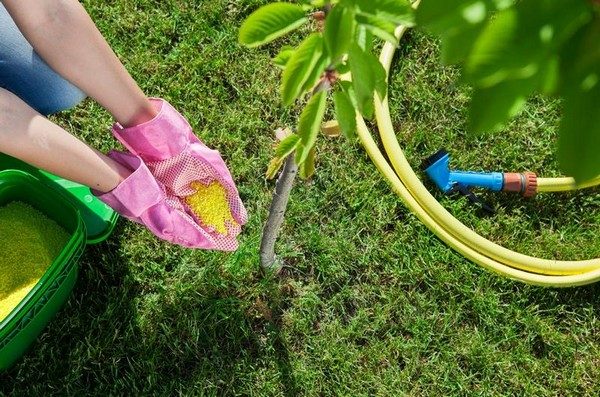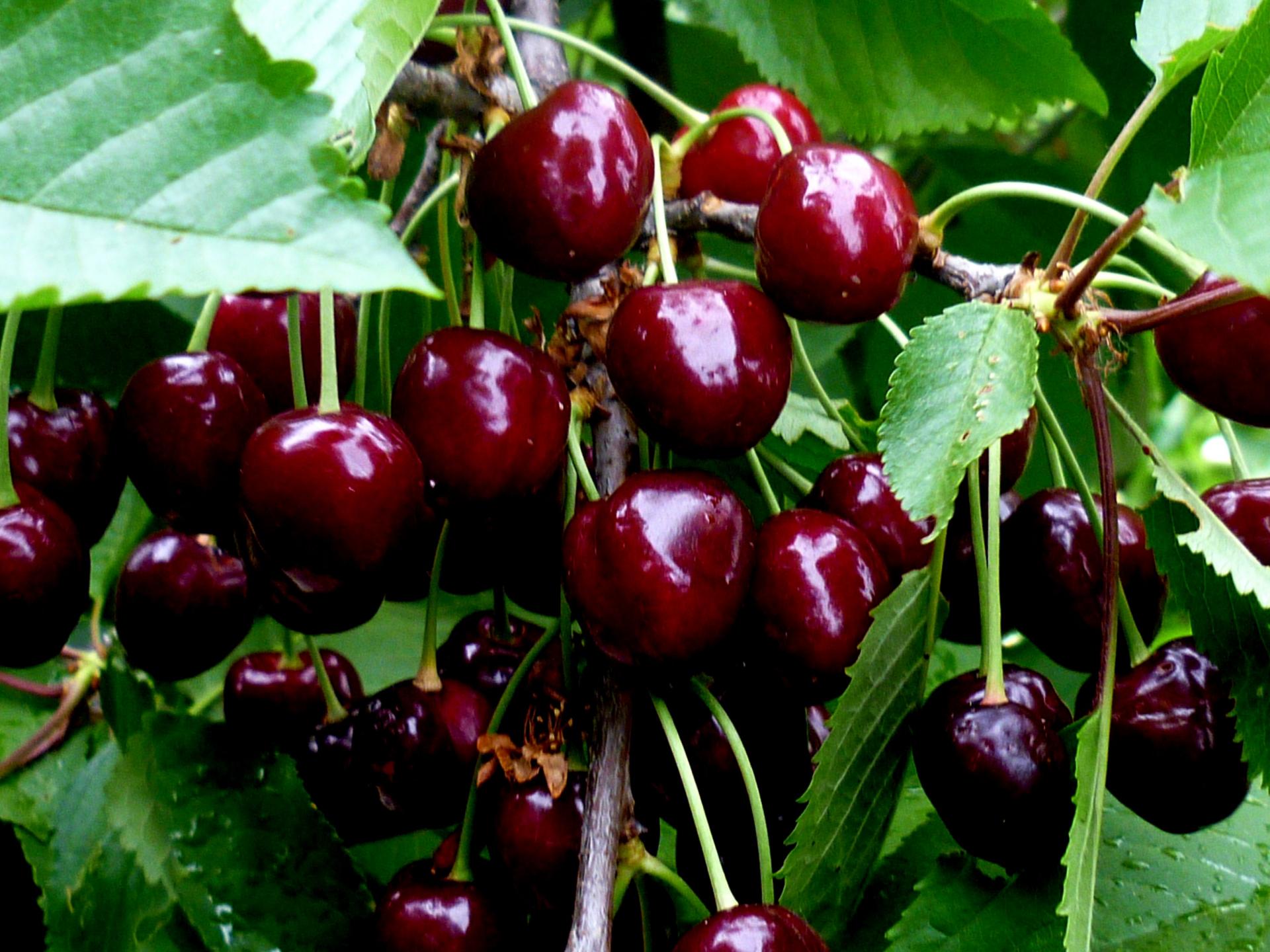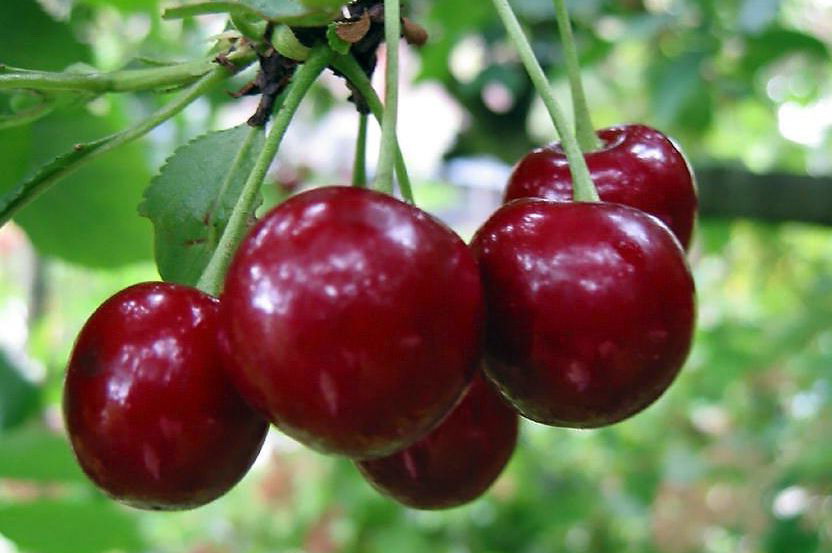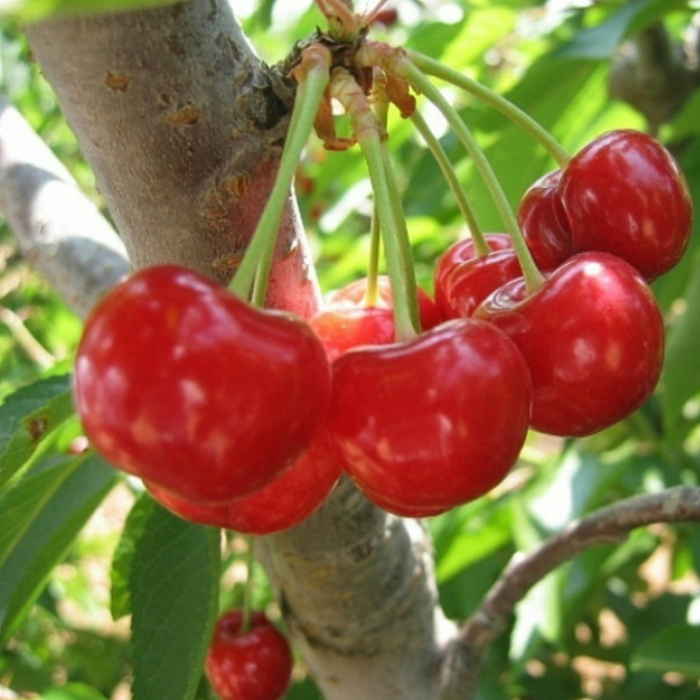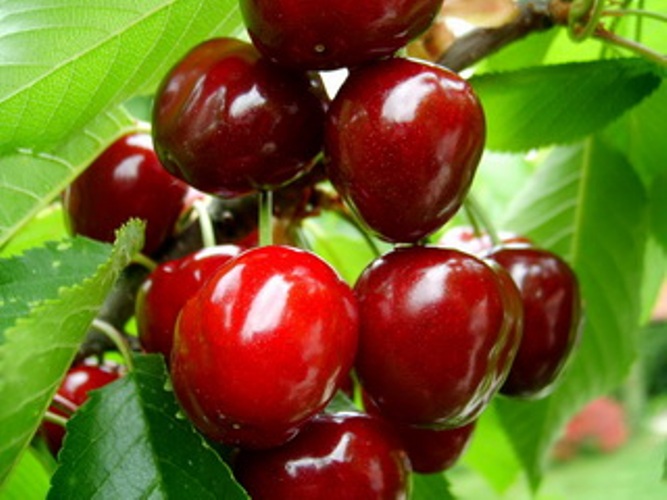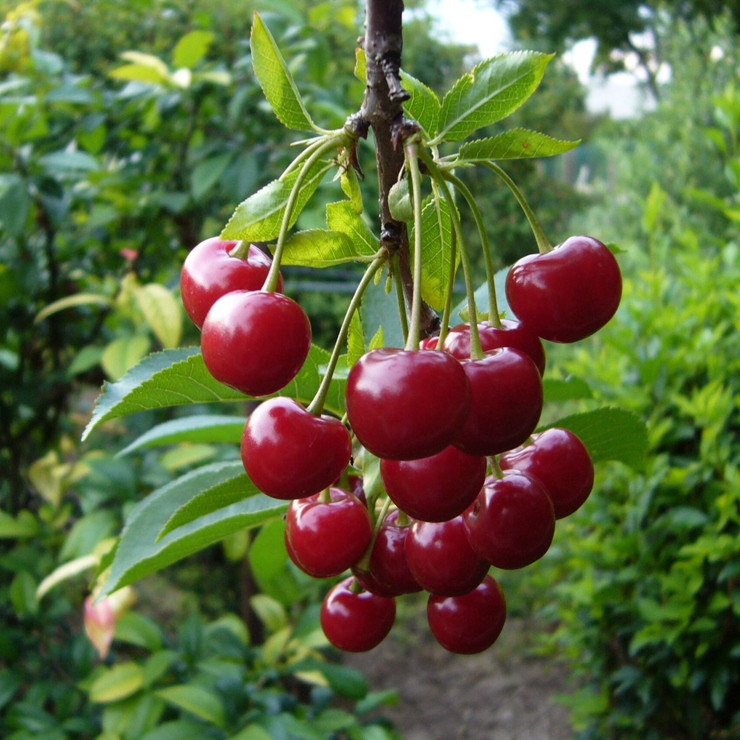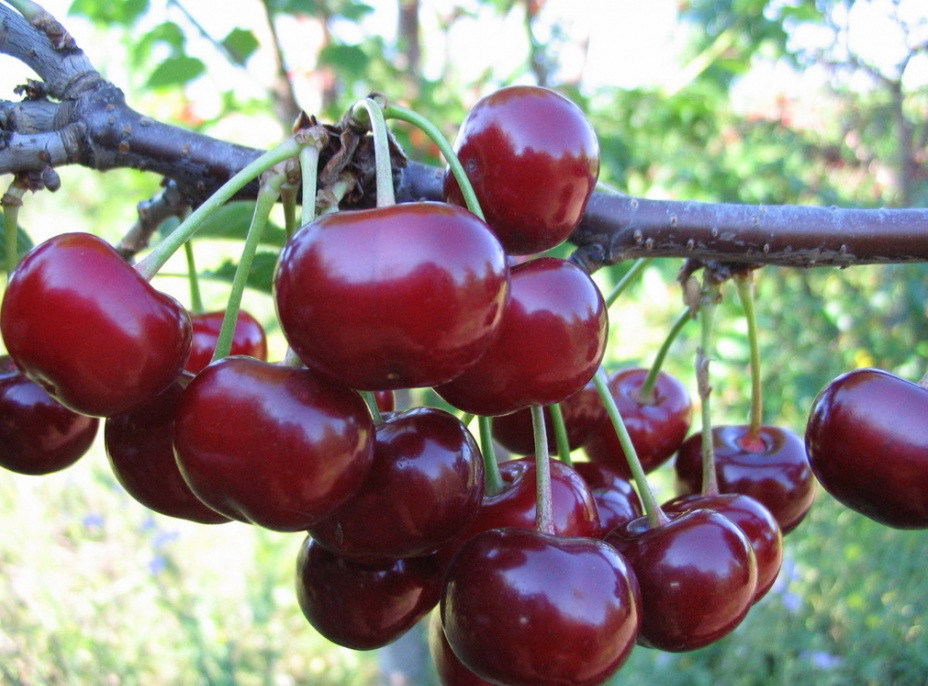Content:
Cherry is one of the most popular and favorite summer berries in Russia. It contains useful vitamins, has a sour-sweet taste and amazing aroma. Therefore, many gardeners are interested in what varieties of cherries exist and how to grow them on their site. Below in more detail about such a popular variety as Youth Cherry.
History of creation and a brief description
This variety was created not so long ago - in 1993, crossing Lyubskaya and Vladimirskaya cherries. The resulting result quickly gained popularity among gardeners because of its qualities, which will be discussed in more detail below. Of all the varieties, this cherry (Molodezhnaya variety) is the closest to Malinovka and is considered self-pollinated, tolerates cold well and gives a rich harvest.
Description of cherry variety Molodezhnaya
The maximum height of a cherry tree is up to 2-2.5 m, it can be either in the form of a tree or a bush. The crown has a rounded shape, and with the appearance of fruits it is pulled downward. Cherry bears fruit in the fourth year of life, while it begins to bloom from mid-May, and you can harvest in 2 months, therefore this variety is classified as late-ripening.
Cherry fruits are large enough, up to 1 cm in diameter, have juicy, sweet flesh and rich maroon color. The bone is easily separated from the pulp. Because of its taste, Molodezhnaya cherry is considered a dessert variety, that is, all kinds of jams, compotes, jams, berries are made from it, which are also great for fresh consumption.
One cherry contains a large amount of vitamins B and E and ascorbic acid, as well as substances that strengthen the walls of blood vessels. Therefore, many doctors recommend including such varieties of cherries in the diet to increase the level of hemoglobin in the blood.
This cherry variety is self-pollinated. This means that you don't need to plant cherries or other varieties near the tree to pollinate it (no pollinator needed). Moreover, Molodezhnaya cherry is capable of pollinating its late-flowering relatives. Thanks to this property, the variety is famous for its high yield: 10-12 kg of fruits can be harvested from one tree, and if the weather conditions are also good, then this figure can reach 15 kg.
Another key feature of the variety is its good frost resistance.
Features of planting and care
The place for the future cherry tree is chosen so as to provide, in addition to protection from the wind, the sun's rays on the tree. In addition, it should be located on an elevation, not on a flat. It will be useful to check the presence and level of groundwater. They should be no closer than one and a half meters to the surface, since this varietal cherry bush does not tolerate excess moisture.
The ideal time for planting is spring (preferably early) or autumn. For this, seedlings 1-2 years old are used.It is best to buy them with leaves that tell you about the health of the plant. The length of the roots must be at least 10 cm.
Step-by-step instructions on how to plant cherries correctly:
- First, you need to dig a hole about 80 cm in diameter.
- Put nitrogen, phosphorus and potash fertilizers at the bottom, you can add manure.
- Immerse the roots of the seedling in the hole and gently sprinkle them with earth.
- Dig a small hole around the trunk and sprinkle it with sawdust, humus or expanded clay. This will help the water to linger during watering and prevent excess moisture at the roots.
The correct planting of a cherry tree is the key to its successful growth and development.
Until the tree begins to bear fruit, you need to process the trunk with lime.
While the cherry is young, organic fertilizers and minerals are added to the soil for successful plant acclimatization. Further, as the tree grows, it is fed: in the spring you can add nitrogen, and in the fall - potash and phosphorus fertilizers. With a lack of these substances in the soil, the yield and the ability of the plant to fully protect against diseases are significantly reduced.
One of the most important points in the care of Molodezhnaya cherries is crown pruning. To do this, you need to remove too overgrown tree branches annually. Without regular pruning, you should not expect a first-class berry harvest, because overgrown branches create a voluminous crown that does not allow sunlight to pass through well. In addition, after pruning, the cherry begins to bear fruit intensively, which any summer resident and gardener will appreciate.
Despite its good frost resistance, in winter it is still worth protecting the cherry tree not so much from the cold as from rodents and other pests. For this, the ground at the roots is covered with moss or peat, which, however, creates additional insulation in particularly cold seasons.
Harvesting
The first cherry fruits appear in mid-July, and the harvest ends in August. Due to the fact that the height of the plant is small, and the trunks and branches are thin, it is not recommended to climb the tree so as not to break it. You need to think in advance about ways to harvest from the upper branches.
The harvested cherries can be stored in the refrigerator for up to 2 weeks, and when frozen, they will perfectly retain their properties and will be usable for six months.
Advantages and disadvantages of the variety
There are few difficulties with growing and caring for Youth cherries, but they are:
- Average resistance to fungal disease, which leads to the need for careful processing of wood with special means.
- Tendency to overgrowth of the crown, which can lead to less abundant fruiting.
- Some capriciousness regarding soil moisture: excess moisture can harm the root system, but drought is not good either.
- The need for regular fertilizing.
However, many gardeners faced with this cherry variety note that it has more positive sides, and they even cover these shortcomings. These include:
- good winter hardiness, which allows you to endure cold times without much damage, therefore Molodezhnaya cherry is grown quietly, both in the Moscow region and in the Urals;
- self-pollination, which saves the time and effort of the gardener, because it is not necessary to plant some more trees nearby;
- bountiful harvest, which, moreover, is almost always guaranteed, regardless of weather conditions;
- of course, sweet and large berries, which contain many useful substances.
A cherry variety such as Molodezhnaya is great for growing both experienced gardeners and beginners. If you approach this issue competently, then in a few years a beautiful cherry tree will bloom in the garden and bring delicious berries.
